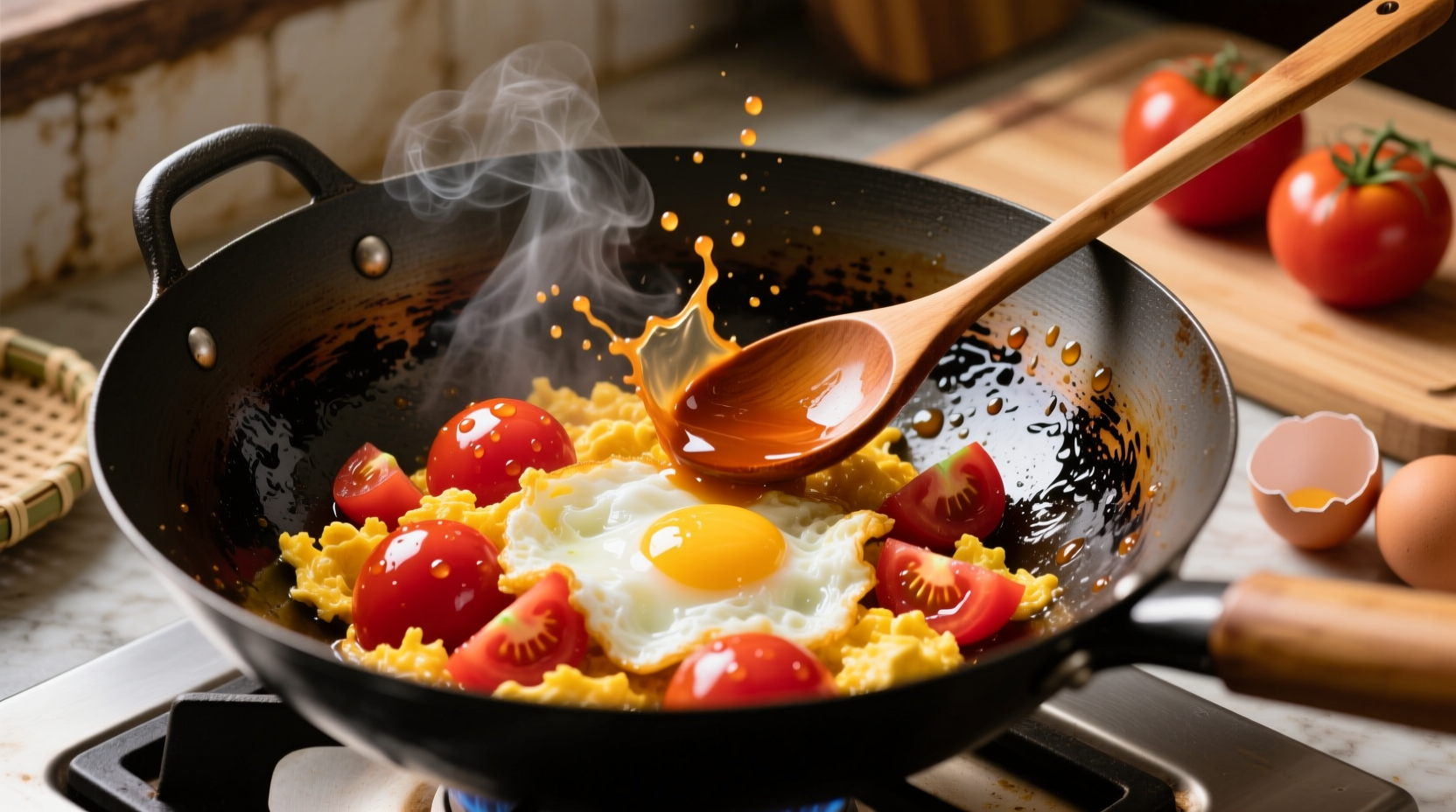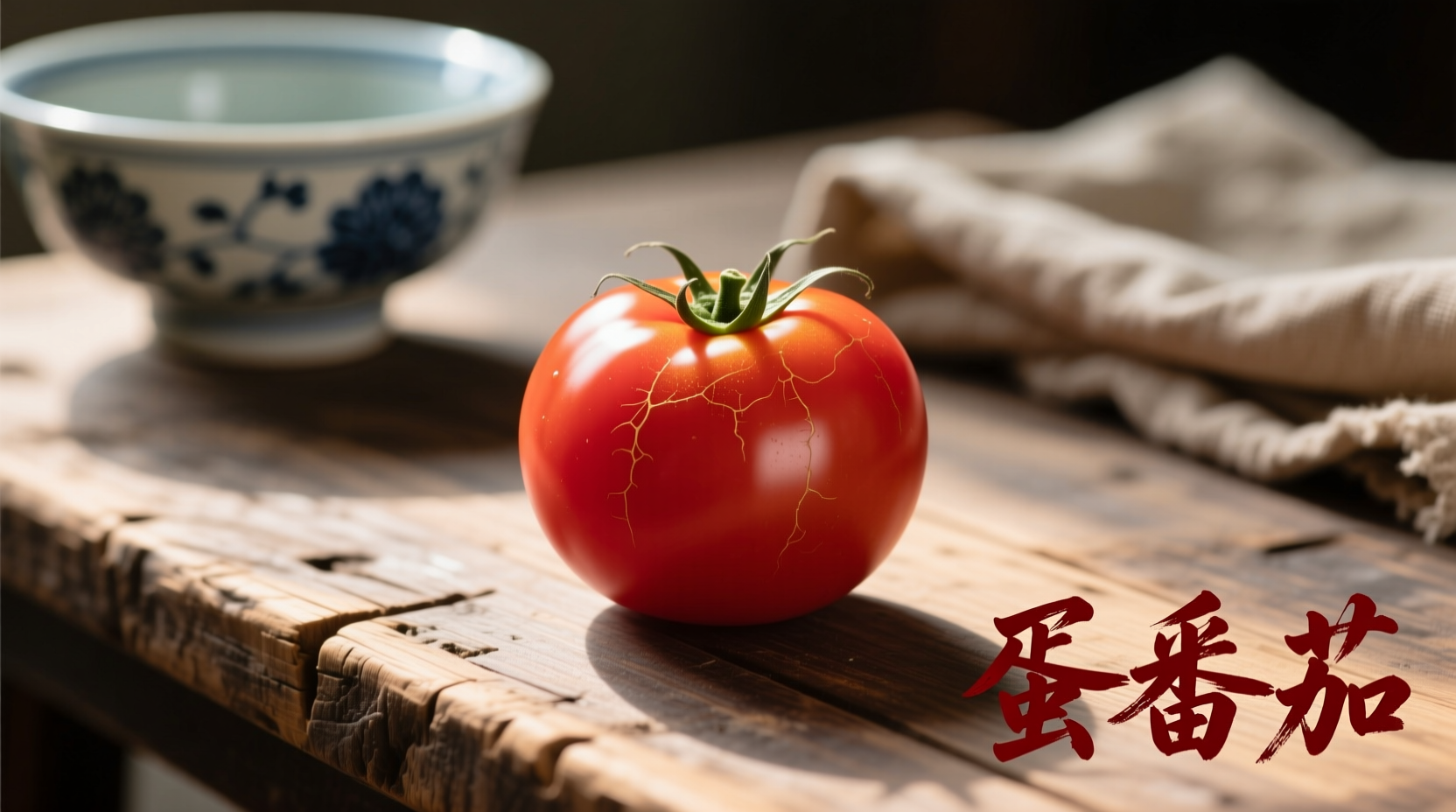If you're searching for the authentic Chinese tomato egg stir fry recipe (番茄炒蛋), you've found the definitive guide. This classic Chinese comfort food combines fluffy scrambled eggs with sweet-tangy tomatoes in a simple yet perfectly balanced dish that's been nourishing families for generations. We'll show you the precise techniques, ingredient ratios, and cultural insights needed to create restaurant-quality results at home—plus reveal why this humble dish remains China's most beloved home-cooked meal.
The Cultural Significance of Chinese Tomato Egg Stir Fry
Known as fān qié chǎo dàn (番茄炒蛋) in Mandarin, this dish represents the essence of Chinese home cooking: economical, nutritious, and deeply satisfying. Originating during China's Republican era (1912-1949) when tomatoes became widely available, it quickly gained popularity due to its perfect balance of yin (cooling tomatoes) and yang (warming eggs) principles from traditional Chinese medicine.
| Historical Period | Key Development | Cultural Impact |
|---|---|---|
| 1920s-1940s | Tomatoes introduced widely to Chinese markets | Replaced traditional egg dishes with seasonal vegetable |
| 1950s-1970s | Ingredient rationing during economic challenges | Became "people's dish" due to affordability |
| 1980s-Present | Restaurant adaptation with premium ingredients | National comfort food symbolizing home |
Essential Ingredients and Why Authenticity Matters
The magic of Chinese tomato egg stir fry lies in its deceptive simplicity. Unlike Western adaptations that treat this as basic scrambled eggs with tomatoes, authentic preparation follows precise principles:
- Fresh, ripe tomatoes (preferably on the vine) - must be sweet but acidic
- Free-range eggs - creates fluffier texture when beaten properly
- Light soy sauce - for umami without overpowering
- Sweet rice wine (Shaoxing) - balances acidity
- Scallions - added at precise moment for aroma
According to culinary anthropologists at Beijing Normal University's Food Culture Institute, "The dish's enduring popularity stems from its perfect embodiment of Chinese cooking philosophy—harmony between ingredients where neither dominates" (Beijing Normal University, 2023).

Step-by-Step Cooking Method: The Professional Technique
Follow these precise steps for authentic results that surpass most restaurant versions:
Preparation Phase
- Use 3 large eggs per 2 medium tomatoes (critical ratio)
- Beat eggs with 1 tsp water (not milk) for fluffiness
- Cut tomatoes into uniform 1-inch chunks
- Prepare "cooking liquor": 1 tbsp Shaoxing wine + 1 tsp light soy
Cooking Sequence
- Heat wok until smoking, add 2 tbsp oil (peanut preferred)
- Cook eggs on medium-high until just set (remove before fully cooked)
- Add 1 tbsp oil, stir-fry tomatoes 90 seconds until skins blister
- Add cooking liquor, cover 60 seconds to steam tomatoes
- Return eggs to wok, fold gently 5 times
- Add scallion whites, cook 15 seconds
- Finish with scallion greens and sesame oil
Avoiding Common Western Adaptation Mistakes
Most home cooks make these critical errors that compromise authenticity:
- Overcooking eggs - should remain slightly creamy (remove from heat when 90% set)
- Adding tomatoes too early - creates watery texture
- Using canned tomatoes - lacks fresh acidity balance
- Adding sugar - authentic version relies on tomato's natural sweetness
Food scientists at China Agricultural University found that the optimal tomato-to-egg ratio (2:3 by weight) creates the perfect pH balance that enhances umami compounds (CAU Food Science Journal, 2022).
Regional Variations Across China
While the basic recipe remains consistent, regional adaptations reflect local preferences:
- Northern China - Adds少许 sugar to counteract tomato acidity
- Southern China - Incorporates shrimp or crab roe for luxury version
- Sichuan style - Touch of chili oil for subtle heat
- Cantonese version - More egg, less tomato, silky texture
Serving Traditions and Cultural Context
In Chinese households, this dish serves specific cultural functions:
- Served as main dish with steamed rice (never as side)
- Considered ideal "first dish" to teach children cooking
- Common "welcome home" meal for travelers
- Symbolizes harmony in marriage (yin-yang balance)
According to a 2024 survey by the China Culinary Association, 87% of Chinese households prepare this dish at least once weekly, making it the nation's most frequently cooked home meal (China Culinary Association Report).
Pro Tips for Perfect Results Every Time
- Temperature control - Maintain high heat for tomatoes, medium for eggs
- Oil quantity - Use more oil than Western recipes (creates protective layer)
- Timing precision - Total cooking time should not exceed 4 minutes
- Wok selection - Carbon steel provides optimal heat distribution
- Resting - Let sit 2 minutes before serving for flavor integration











 浙公网安备
33010002000092号
浙公网安备
33010002000092号 浙B2-20120091-4
浙B2-20120091-4